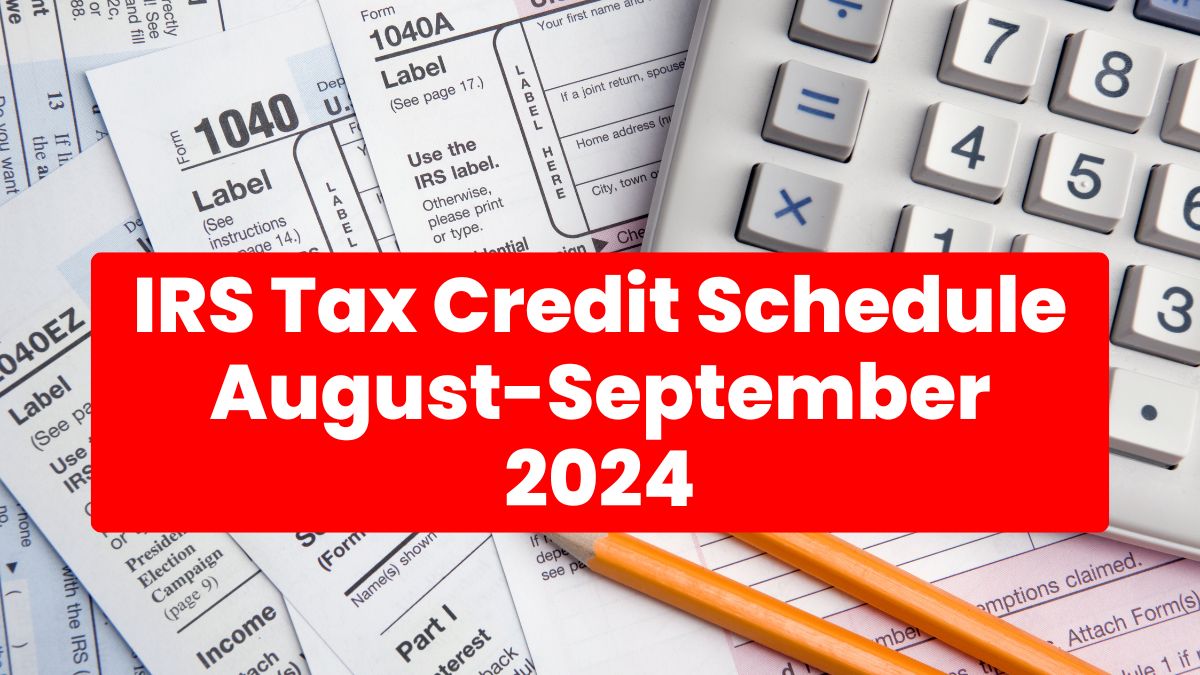IRS Tax Credit Schedule August-September 2024 – You can browse the latest IRS Tax Credit Schedule 2024: Tax Credit Dates from July-December, Amount details, as well as get the latest updates. A tax credit is a deduction which is applied to income tax liability in order to reduce the amount owed.
There is a term called income tax liability, which refers to the amount of money that an individual owes to the government based on the amount of income they earn. During this article, we will be discussing the schedule of tax credits that are available to taxpayers.
IRS Tax Credit Schedule 2024
There is an income tax credit that is given by the Internal Revenue Service in order to minimize income tax liability. The tax payers can be divided into two categories based on their income: general taxpayers and fiscal taxpayers. Those who are general taxpayers can use the employer’s tax calendars to track their income taxes.
It is important to note that the tax calendar is segmented into quarters. There are three segments in the first quarter, which are January, February, and March. There are three segments in the second quarter: April, May, and July. The third quarter of the year is divided into three segments, which are July, August, and September. The fourth quarter of the year is divided into three segments: October, November, and December. Aside from this, tax payers who file their income tax returns for the fiscal year might have to make some adjustments to the calendar for submitting their tax returns.
What is the process of receiving IRS tax credits?
In order to receive the IRS Tax Credit Amount, an applicant must meet certain eligibility criteria in order to be considered for the credit. As long as the applicant’s tax return is filed and the applicant meets the eligibility requirements, eventually the recipient will be able to receive the amount into the bank account that they provided. Payments will be sent to you via direct deposit by the IRS as soon as it receives your payment form.
In case, an applicant qualifies for the program and yet they have not received the amount of money, then the recipient should take certain preventive measures, such as filing a tax return as soon as possible. Apart from this, if the applicant’s bank details, personal information, or any other details have changed over time, then he or she should update this information on the official portal of the IRS if necessary. Furthermore, recipients are advised to regularly check the official website of the Internal Revenue Service for updates on the latest changes.
The IRS Tax Credit Dates from July to December are listed below
In 2024, one of the most important tax dates is 16 January 2024, when the due tax payment for 2023 must be made. Tax returns for the year 2023 must be filed by 29 January 2024, and the first due payment for the year 2024 must be filed by 15 April 2024. A second estimated tax payment for the year of 2024 was made on 17 July 2024, which is the date when the payment is due. It is estimated that the third estimated due tax payment, which is due on 16 September 2023, will be made in July 2024.
Tax returns for the year 2023 will now need to be filed by 15 October 2023 in order to meet the extended deadline. It is expected that the fourth estimated tax payment due in the year 2024 will be made on 15 January 2025. On the other hand, if the income tax return was filed online, then that will take approximately 3 weeks for the refund to be processed, and if the direct deposit was used, then that will take approximately 6 weeks for the refund to be processed.
There is a pending IRS tax credit amount
The amount of tax deduction for 2024 is sealed at $1.22 million, and the limit of expenses for this amount for the year is restricted to $3.05 million. In addition to this, an increase was made in the limit of deduction amount for property services, bringing it up to $1.29 million, and an increase in the limit of expense amount, bringing it up to $3.22 million. It is important to note that, in years when inflation is expected to be high, the amount will be adjusted accordingly.
It is possible to claim the tax credits when the taxes are higher than what has been declared in the tax return. For the claimant to qualify for the deductions and credits, he or she must meet the qualifying requirements for the deductions claimed. As of 2023, the standard deduction amount will be $13,850 for both singles and those who are married but who are filing their tax returns separately. Additionally, the married couple filed their tax returns jointly, and the standard deduction amount was $27,700 for the married couple. In addition, the deduction amount for the head of the family was $20,800, which was a significant amount.
Here is everything we know about
It is common to divide a 12-month tax calendar into four quarters based on the number of months in it. Calendars for specific processes such as the filing of tax forms, paying taxes, and a few other actions that have to be taken with regards to tax laws have specific due dates. The IRS tax calendar covered both self-employed individuals and businesses with regard to their taxes. There are various types of taxes listed on the tax calendar, such as the Estate Tax, Gift Tax, Foreign Partnership Tax, Corporation Tax, etc.
A deduction amount can be divided into two types, namely a standard deduction and an itemized deduction. A standard deduction is the amount that is deducted from a set amount, and if the loss and expense of the deducted amount is greater than the amount that is saved, the applicant can deduct it step by step from his or her income, which is known as an itemized deduction.
It is possible to deduct alimony payments, car business expenses, phone business expenses, and other expenses that are related to the business. Itemize is a deduction method that allows you to deduct some expenses that are listed below, if you choose to do so:
- Capital loss
- Interest rates on home mortgages
- There is a loss caused by disasters
As a result of tax credits, an individual may be able to obtain various benefits, such as the reduction of their tax burden, creating a specific financial structure for a better future, and improving the general well-being of their families. By receiving a tax credit, a recipient might be able to manage their expenses and maintain a minimum standard of living while managing their expenses.












